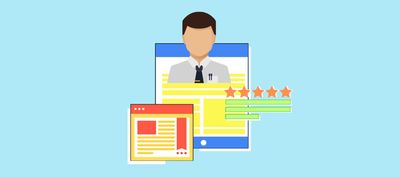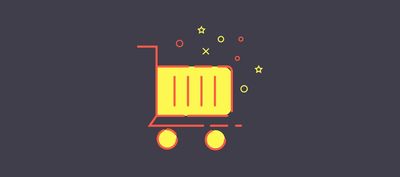How to Create B2B Buyer Personas
Dutch | Espanol | French | German | Hindi | Indonesian | Italian | Portuguese | Vietnamese

Buyer personas are necessary to identify target customers and to increase the return-on-investment (ROI) of your marketing campaigns. But the purchase and decision-making processes are not the same for all kinds of products/services and buyers.
For example, 79% of business-to-business (B2B) sales have more than one person involved in purchase process. Further, B2B buyers are likely to spend more time on analysis and review multiple sources and proofs before purchasing a product. As rightly captured by Forrester, “B2B buyers now demand an entirely different kind of relationship with your organization – They expect to be treated as equal partners”. This mandates a different approach to creating B2B buyer personas when compared to that of creating business-to-consumer (B2C) buyer personas.
In this article, we look at the differences between B2B and B2C buying processes, outline the steps for creating B2B buyer personas and share few examples of B2B personas.
B2B versus B2C buying processes
B2B purchasing processes are more involved and have the following general characteristics in contrast to B2C buying processes.
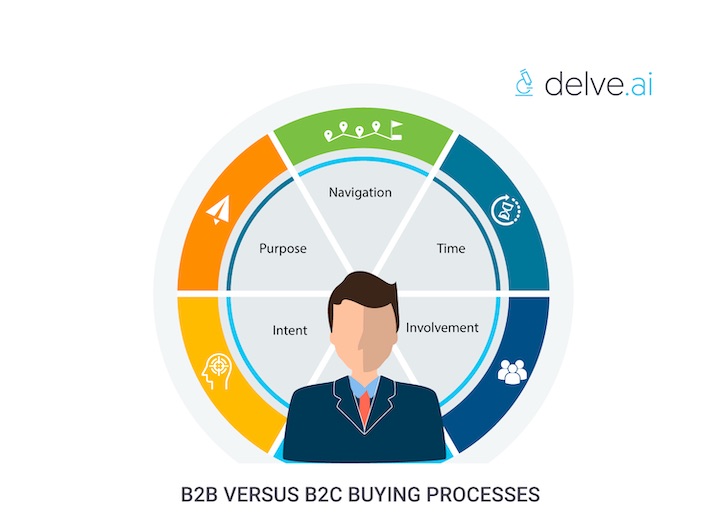
- Navigation: B2B buyers don’t want persuasion and are likely to find their own path through the buying process, whereas B2C buyers often skip to the consideration stage of the marketing funnel.
- Time: The time taken to purchase a product or service by a B2B buyer is usually much longer than a typical B2C buying process.
- People Involvement: Buying a B2B product or service usually involves multiple persons.
- Intent: Intent by B2B buyers is more likely to be rational than impulse.
- Purpose: Usage of B2B products may span multiple users/functions and hence buying decisions involve several departments of the company.
What is a B2B buyer persona?
Any business must define its set of target buyers. Only then can a business move forward with effectively choosing marketing strategies, generating content for such buyers and promoting its products.
Creating high-quality personas can unlock fresh opportunities for businesses to better relate to their prospective buyers, as well as unravel methods to efficiently preserve existing buyers. It also assists with awareness of negative personas/profiles that you are marketing to.
Buyer personas are fictional, composite profiles of genuine customers that the business wishes to acquire. In B2B scenarios, as multiple decision makers and influencers from different departments within a buying organization are often involved, more than one persona will have to be created. Attributes of these personas help to identify their needs/desires and provide ideas to interest them.
Steps to create B2B buyer personas
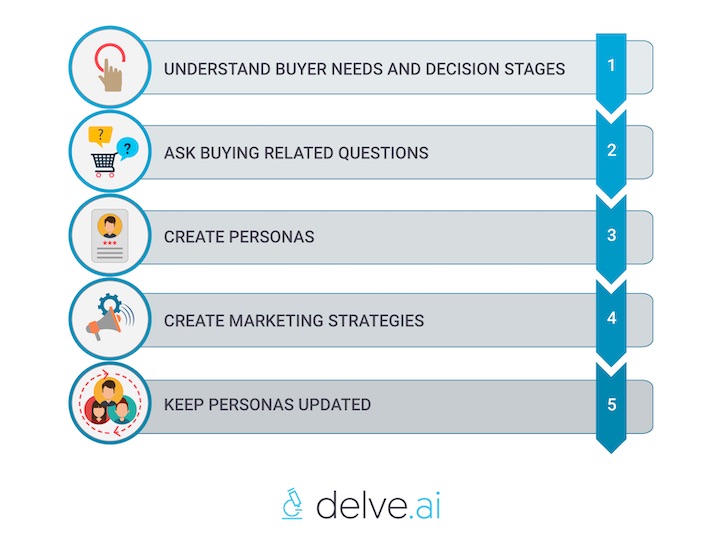
Understand buyer needs and decision stages
A typical B2B buying process involves three stages - awareness, evaluation and purchase stages. The process usually begins with the realization of a need for a product or service. This could result from, for example, monotonous tasks that can use automation, or a fresh line of work that demands the help of new products or services. To handle such needs, team members within an organization, possibly from different departments, will characterize the need/problem and the desired solutions from their respective perspectives.
Identifying such needs related information from the perspective of the buyers will help you make your product as relatable and distinguishable as possible for these customers and grab their attention. Understanding their online consumption habits will help guide creation of influential content in the form of blog posts, social content, e-books, videos, podcasts, and case studies.
In the evaluation stage, this team is on the lookout for a solution. Buyers will seek suppliers who can provide a product that fits their quality, cost, support, shipment, after-sales assistance, and customization needs. They will request for a proposal from various vendors and inspect them. It takes factors such as the availability and authenticity of the vendor into consideration.
A recent Gartner report shows that 77% of B2B buyers stated their latest purchase was very complex or difficult. For your niche, understanding the actual challenges for these buyers, whether it is selecting from a wide range of options or finding even one solution that does the job, is vital for planning appropriate marketing strategies.
In the purchase stage, they place an order for a product or service from the desired vendor. This stage involves negotiations, followed by final agreement on price, quantity, delivery, duration of the product or service in use, policies of return and guarantees.
Even after the delivery of the product or service, it is useful to track and understand the usage and associated benefits for those use-cases. Active usage and feedback of your product or service will likely result in renewals after the end of the current term.
Ask buying related questions
Asking the right questions will filter the users and help identify the ideal users, which is essential for creating accurate B2B buyer personas. It tells us what the customer goals, behavior, demographics, and challenges are. These help in planning marketing campaigns that can yield a high return on investment.
Having a set of questions as a template will help you identify the needs and goals of your target buyers. Here are some questions to consider while creating a B2B buyer persona.
- What is their job title?
- Which place or nation do they belong to?
- What is their immediate goal?
- What is their academic background?
- What materials do they glance at to study about products/services?
- Which industry do they work in?
- What type of company do they work for?
- Do they devote plenty of time surfing online?
- How does their team measure progress?
- What are the trends in their industry?
- How well is their company doing financially?
- What brands are their company often associated with?
- What is the frequency of their need for what you offer?
- What are their buying triggers?
- How much of social media do they use?
- Which social media channels do they use the most?
- Which is their preferred mode of communication?
Create personas
- Know your B2B buyers: Gather answers for the above questions from your potential buyers. This can be via traditional methods of interviewing or using data analytics at scale. For example, our software, Live Persona by Delve AI, creates B2B buyer personas in minutes by analyzing your Google Analytics data.
- Segment your users: You will likely have more than one type of customer or need that you serve to, and hence, creating multiple B2B buyer personas is required. Group the characteristics and segment them under the categories of personalities based on the above B2B persona questions.
- Create personas: A persona is a fictional, yet realistic description of your customer within each segment. Hence, give it a name, picture, job title, personality traits, needs, organization details, and goals. Analyze the answers for various categories of B2B buyers from the above questions and fill the template for each category. Ta-da! Your B2B buyer personas are ready!
Create marketing strategies
Your holy grail B2B buyer persona does not end right after creating it. Marketing strategies have more power to them when you create and apply them based on your B2B buyer personas. Since you know the kind of buyers you are targeting and their needs, it is easier to address them and convey content at ease. You can message better since you are addressing their needs instead of your own.
The buyer personas speak to you about where your buyers are, what channels they prefer, what they read online, where they get most of their information from, what their immediate needs are, etc. With the help of such insights, it is easier to create marketing strategies that result in higher ROI.
Keep personas updated
In a rapidly changing business environment, B2B buyer personas should be updated to stay current with the industry. Competitors are watchful and will grab opportunities to outrun you.
You should update your personas in the following scenarios:
- Every year
- When you rebrand your company
- When you modify or change your product
- When your organization is gained or merged, and
- When an economic or natural triggers for your business occurs.
B2B buyer persona template and examples
Some of the prominent sections that a B2B buyer persona template must include are:
- Name
- Job role
- Industry
- Location
- Goals
- Pain points
- Motivation and drivers
- Online consumption habits
Here are two hypothetical examples of B2B buyer personas based on such a template.
Example 1:
“Kyle is an HR Assistant at a late-stage startup based in Silicon Valley and is looking for a suitable product to track his employees’ productivity”.
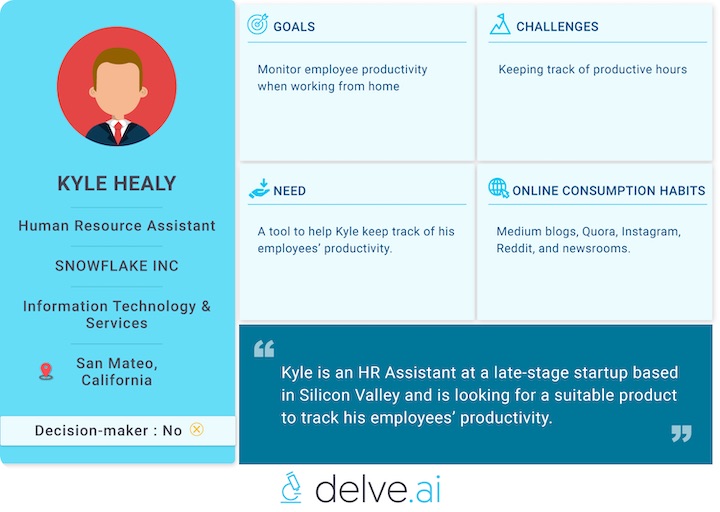
Example 2:
“Liza is a product marketer in an EdTech company who needs a tool to create, present and share videos lessons.”
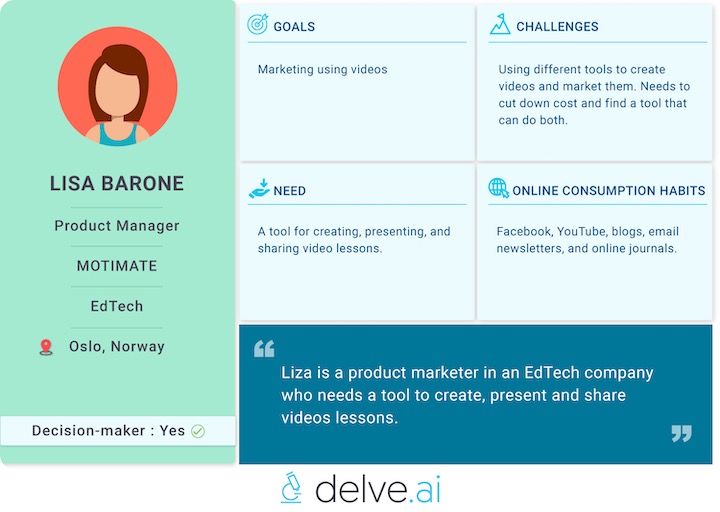
Conclusion
It is important to understand how B2B buying differs from B2C purchase processes and why multiple personas are often needed for B2B purchases. Creating and using accurate B2B buyer personas, using the steps outlined in this article, help to refine target audiences, set up efficient marketing campaigns, and support buyers better as they navigate through a range of options as part of the buying process, thereby helping you grow your revenues.
Frequently Asked Questions (FAQs)
What is a B2B buyer persona?
A B2B buyer persona is a detailed representation of an ideal customer in a business-to-business context. It includes the needs, objectives, and motivations of key decision-makers and influencers within an organization. B2B buyer personas help companies tailor their marketing strategy to cater to different decision-makers and drive conversations.
What is the difference between B2B and B2C personas?
B2C personas are different from B2B personas due to the distinct nature of their customers. With B2C personas, you focus on fulfilling the personal needs and interests of your customers. B2B buyer personas focus more on the interests of the business or organization they are selling to, including their purchasing process, key decision-makers, and stakeholders.
How do you create a B2B customer persona?
As explained in the article, you can easily create a B2B customer persona by following these steps:
Step 1: Understand customer needs and motivations
Step 2: Decode the B2B buying process
Step 3: Ask product and buying-related questions
Step 4: Identify key elements and data sources
Step 5: Draft buyer personas
Step 6: Create B2B marketing campaigns
Know your customers with B2B buyer personas
Subscribe for blog updates
Our products
Customer Persona
from your customer/CRM data
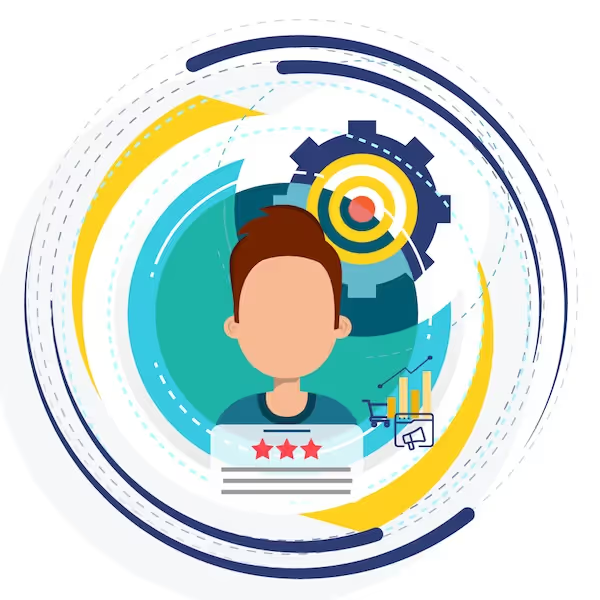
Competitor Persona
using Delve AI's intelligence data

